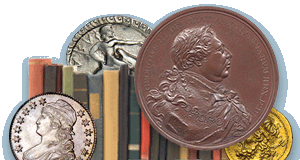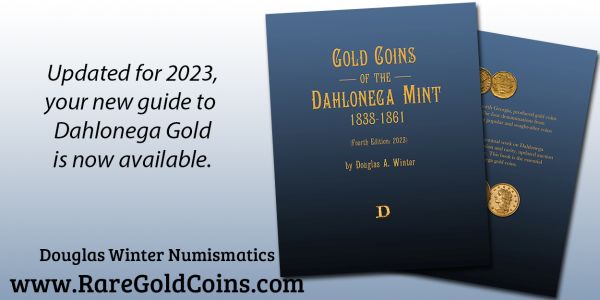
PREV ARTICLE
NEXT ARTICLE
FULL ISSUE
PREV FULL ISSUE
VULCAN ON ANCIENT COINSMike Markowitz published a new CoinWeek article about Vulcan on ancient coins. Here's an excerpt - see the complete article online. -Editor TO THE ANCIENT Greeks, he was Hephaistos. To the Romans, he was Vulcan. To the Etruscans, he was Sethlans. Many ancient cultures imagined a god of fire who presided over volcanoes and was a metalsmith who crafted magical armor and weapons. Of the 12 "Olympian" gods of the Greco-Roman pantheon, he appears on the fewest coins — a special challenge for collectors eager to assemble a "complete" type set of deities. The eminent Belgian numismatist François de Callataÿ tabulated the frequency of Greek gods and heroes on coins in a major collection (de Callataÿ, 118). Zeus topped the list with 14,019 appearances, Athena with 7,503, and Apollo with 3,634. Poor Hephaestus appeared on 20. Hephaestus on the Coins of Lipara The seven volcanic Aeolian islands off the northern coast of Sicily were settled by Greek colonists as early as 600 BCE. Lipara, the largest island, issued bronze coins bearing what may be the earliest numismatic appearance of Hephaestus dated to c. 440 – 420 BCE. He wears the pilos (Latin: pileus), a conical leather cap worn by smiths to keep sparks from the forge from setting their hair on fire. On a bronze coin of Lipara dated to c. 350 – 300 BCE, we see Hephaestus seated at his anvil, holding his hammer and an unfinished drinking vessel. Aesernia Samnites were a people of south-central Italy conquered by the Romans in a long series of wars from 343 to 290 BCE. Established as a Roman colony in 264 BCE, the Samnite town of Aesernia issued coins bearing the youthful head of Vulcan with one of his attributes, the tongs, used to handle hot metal. Valerian Born to an elite senatorial family about 199 CE, Publius Licinius Valerianus rose to command an army that proclaimed him Emperor after Trebonianus Gallus was assassinated by his troops in 253. During his seven-year reign, he issued a variety of coins of remarkably poor workmanship honoring Roman gods. A silvered bronze antoninianus from the mint of Colonia Agrippinensis (today Köln, Germany) depicts Vulcan standing in a temple, holding his hammer and tongs. The Latin inscription DEO VOLCANO simply states "to the god Vulcan". At just $45, this common type was the most affordable coin I found for this god.
To read the complete article, see:
Wayne Homren, Editor The Numismatic Bibliomania Society is a non-profit organization promoting numismatic literature. See our web site at coinbooks.org. To submit items for publication in The E-Sylum, write to the Editor at this address: whomren@gmail.com To subscribe go to: Subscribe All Rights Reserved. NBS Home Page Contact the NBS webmaster 
|




